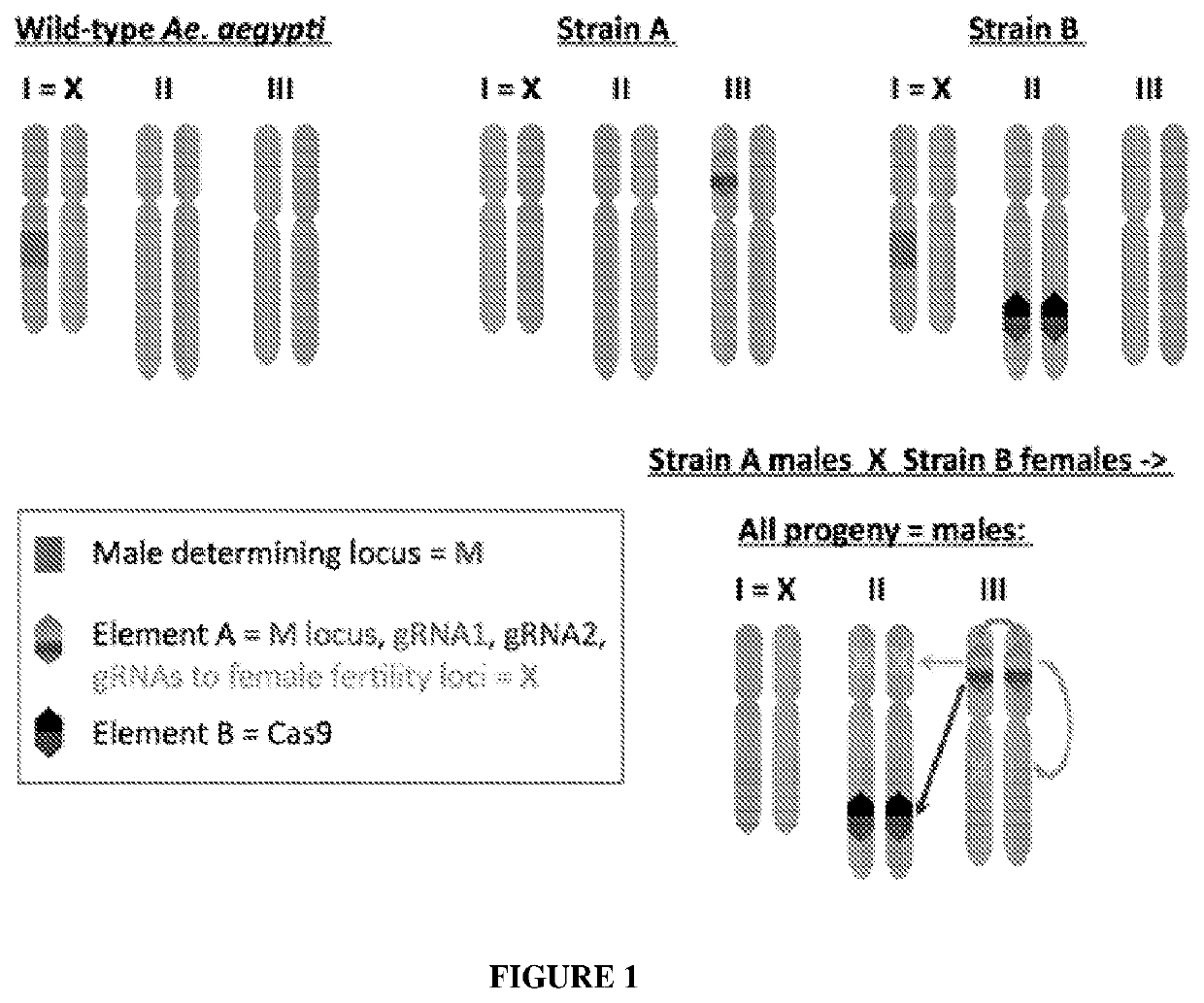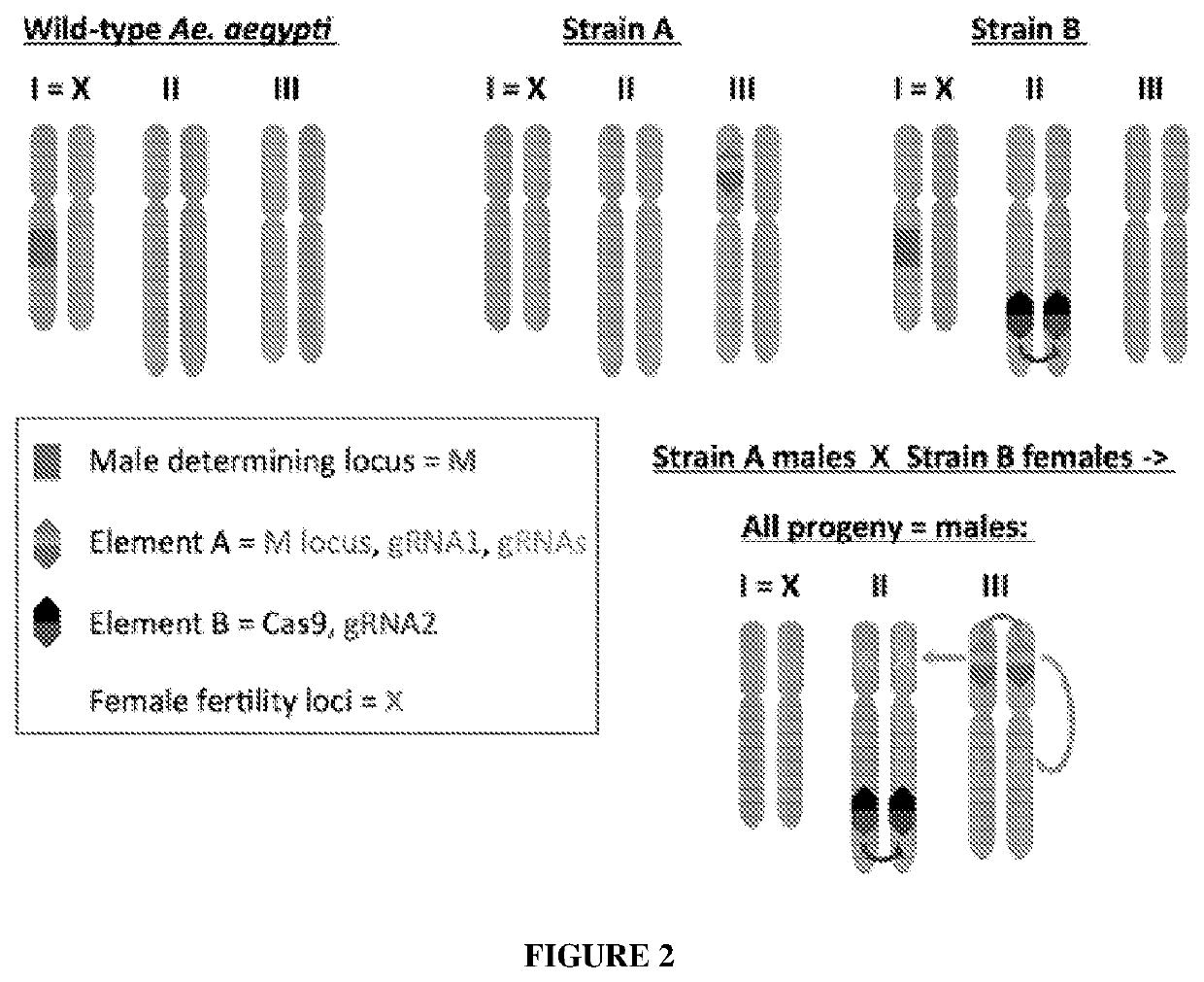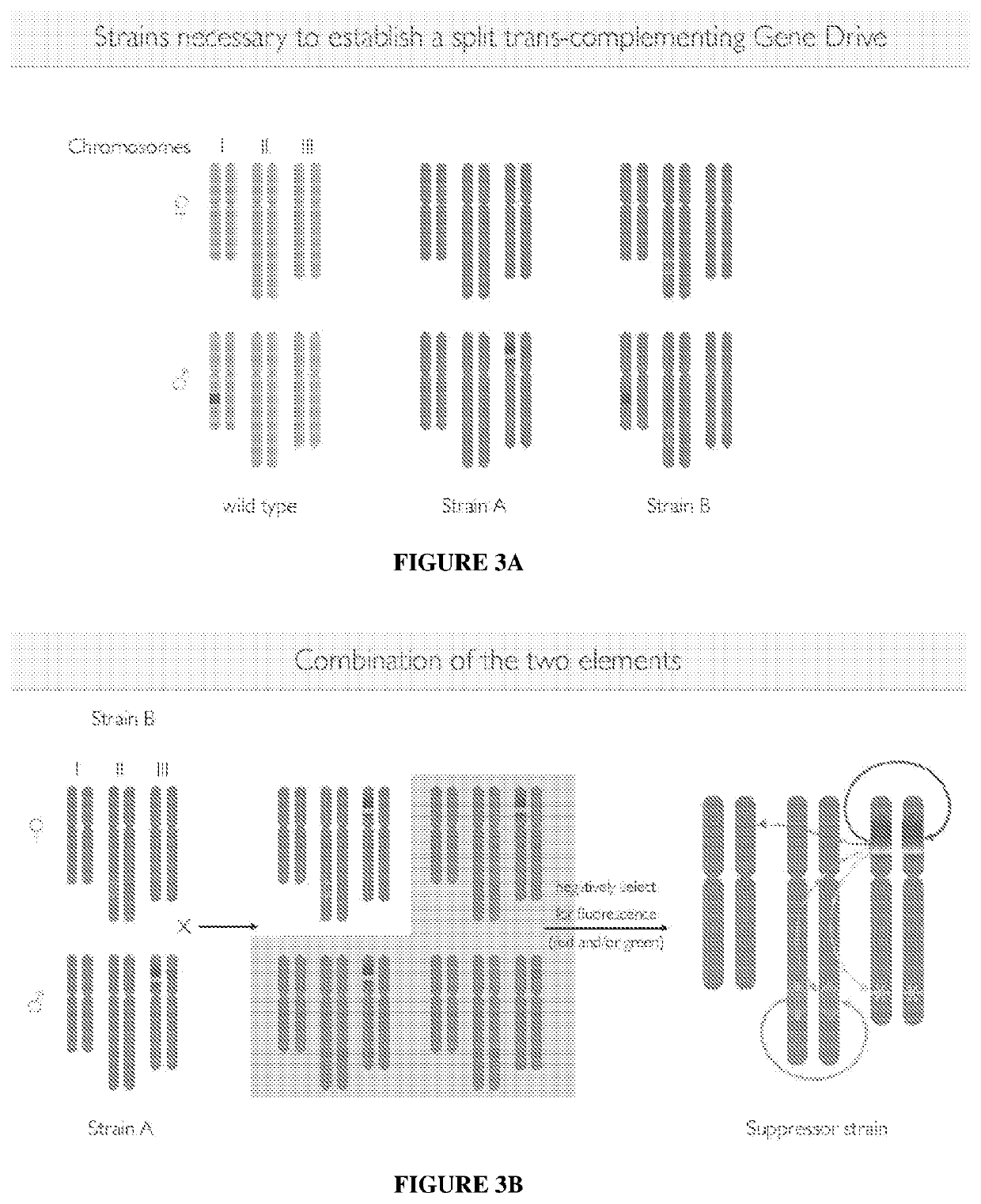Split Trans-Complementing Gene-Drive System for Suppressing Aedes Aegypti Mosquitos
- Summary
- Abstract
- Description
- Claims
- Application Information
AI Technical Summary
Benefits of technology
Problems solved by technology
Method used
Image
Examples
example 1
[0046]Develop population suppression / modification strains of Ae. aegypti based on Cas9-mediated gene drive systems targeting fertility loci and carrying anti-viral effector cassettes.
[0047]FIG. 1 illustrates a split gene-drive system for masculanizing Aedes aegypti with a scheme for masculanizing A. aegypti by creating a split gene-drive system that masculanizes all (or nearly all) progeny. The top left panel depicts the male genotype in wild-type A. aegypti in which one copy of the first chromosome (or X) carries the M locus (encoded by the Nix gene). Females carry two X-chromosomes lacking the M locus. Middle top panel depicts strain A in which the M locus has been moved from the X-chromosome to a well-defined third chromosome position. The M locus (red) is carried on an element A that also carries gRNA1 (purple), which directs cleavage of the genome at insertion site of element A on the third chromosome, gRNA2 (blue) that cuts the genome at the insertion site of element B, and on...
example 2
[0053]FIG. 2 illustrates a split gene-drive system for masculanizing Aedes aegypti with a second scheme for masculanizing A. aegypti by creating a split gene-drive masculanizing system. Top left panel depicts the male genotype in wild-type A. aegypti in which one copy of the first chromosome (or X) carries the M locus (encoded by the Nix gene). Females carry two X-chromosomes lacking the M locus. Middle top panel depicts strain A in which the M locus has been moved from the X-chromosome to a well-defined third chromosome position. The M locus (red) is carried on an element A that also carries gRNA1 (purple), which directs cleavage of the genome at insertion site of element A on the third chromosome as well as gRNAs (green) directing cleavage at structurally critical regions of genes encoding proteins required for female fertility (denoted by green Xs in lower panel). Top right panel depicts strain B in which carries an active gene-drive element B (also referred to as an MCR element)...
example 3
[0055]Elements such as A that can copy themselves to the homologous chromosome in the presence of a Cas9 source are referred to as CopyCat elements. When these all male progeny mate with wild-type females, their offspring will all be identical to their fathers, thus leading to a rapid spread of the split gene-drive system via logistical growth. To readily distinguish wild-type from transgenic chromosomes the transgenic elements A and B can also carry distinct fluorescent markers or alternatively, the wild-type chromosomes can be labeled with insertions of fluorescent markers at the same sites at which the A and B elements are inserted, in which case these modified non-driving alleles would serve as local balancers for elements A and B (see FIGS. 3A-B). FIGS. 3A-C show strains useful to establish a split trans-complementing gene drive with a combination of two elements and a suppressor strain crossed to wild type females.
PUM
| Property | Measurement | Unit |
|---|---|---|
| Fraction | aaaaa | aaaaa |
| Electrical resistance | aaaaa | aaaaa |
| Fluorescence | aaaaa | aaaaa |
Abstract
Description
Claims
Application Information
 Login to View More
Login to View More - R&D
- Intellectual Property
- Life Sciences
- Materials
- Tech Scout
- Unparalleled Data Quality
- Higher Quality Content
- 60% Fewer Hallucinations
Browse by: Latest US Patents, China's latest patents, Technical Efficacy Thesaurus, Application Domain, Technology Topic, Popular Technical Reports.
© 2025 PatSnap. All rights reserved.Legal|Privacy policy|Modern Slavery Act Transparency Statement|Sitemap|About US| Contact US: help@patsnap.com



